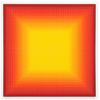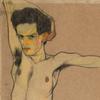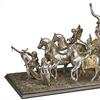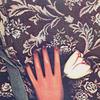Gropius Bau's Postponed Yayoi Kusama Retrospective To Open in April Featuring Her Groundbreaking Work Spanning 80 Years
- March 11, 2021 12:21
"Yayoi Kusama’s work is characterized by revolutionary interventions driven by the desire for an immersive union of body and artwork, and an urge to redefine the role of women in art," says Stephanie Rosenthal, Director of Gropius Bau in Berlin.
Postponed last fall due to the pandemic, the Gropius Bau's exhibition Yayoi Kusama: A Retrospective, a major overview of world-renowned Japanese artist Yayoi Kusama (b.1929), is now set to open on April 23, 2021, with the artist's most complex immersive installation to date. The installation A Bouquet of Love I Saw in the Universe (2021) was realized by Kusama uniquely for the vast historic atrium of the Gropius Bau, which will erupt in a sea of large-scale inflatable tentacles for the exhibition’s duration (to August 1, 2021). It will then travel in November 2021 to the Tel Aviv Museum of Art.
Kusama’s first museum retrospective in Germany spans almost 3000m² and features nearly 300 works from the last 80 years. Subtitled A Bouquet of Love I Saw in the Universe, the exhibition comprises gouaches on paper, accumulative sculptures, Happenings and fashion work, culminating in her recent paintings and a brand new Infinity Mirror Room. The immersive installation will be shown alongside a reconstruction of the artist’s first Infinity Mirror Room, presented in New York in 1965.
The exhibition will feature eight additional exhibition reconstructions from 1952 to 1983, alongside archival materials. Emphasizing Kusama’s lesser-known time in Europe, the exhibition shows Kusama’s work as a forerunner of today’s social media and her redefinition of the role of women in art.
"I am delighted that my retrospective exhibition will be held at the wonderful Gropius Bau... This is an exhibition that I will remember for the rest of my life. I thank you with all my heart, love and hope," said Yayoi Kusama.
Yayoi Kusama: A Retrospective is curated by Stephanie Rosenthal, director of the Gropius Bau, in close collaboration with the artist and her studio in Tokyo, Japan. The exhibition draws extensively on Kusama’s personal archive which Rosenthal and the exhibition team visited in person. Additionally, they consulted the archive of German art historian Udo Kultermann among others, who shaped the artist’s career in Europe.
A bilingual catalogue in English and German published by Prestel accompanies the exhibition. The catalogue can be purchased from the bookshop at the Gropius Bau (and on Amazon, from May 2021). Through its duration, the exhibition will feature extensive programme of education and events, accessible on www.gropiusbau.de/kusama and on-site.
Throughout her career Kusama has always engaged deeply with the act of curating and, as such, has devised ground-breaking formats that can be experienced in this chronological presentation. The retrospective begins with shows that were mounted in her hometown of Matsumoto, Yayoi Kusama Solo Exhibition and Yayoi Kusama Recent Works (1952), in which the immersive nature of her practice was already beginning to take shape. These are followed by Aggregation: One Thousand Boats Show (1963), Kusama’s first environment in New York, anticipating her preoccupation with the idea of self-obliteration
and infinity, which remains a central premise of her work.
A key component of that presentation was a wooden rowing boat covered in white fabric forms, shaped like phalluses. This motif reappeared in the New York edition of the Driving Image Show (1964), grouped with other sculptural Accumulations, which consumed every corner of the gallery space. Floor Show – Phalli’s Field (1965), a show mounted in New York, comprised a mirrored room of approximately 25 m², containing polka-dot phallic forms of red and white fabric, arranged alongside further Accumulations. This was Kusama’s first Infinity Mirror Room. A well-known image of Kusama shows her posing in this room wearing a red bodysuit; by this time, her artistic persona and presence had become an integral part of
every exhibition and performance. Floor Show already contained all of the key elements that distinguish Kusama’s oeuvre today: fabric phalluses, polka dots and mirrors, all used to create an immersive experience.
On the second stage of its journey in 1966, the Driving Image Show arrived in Essen, Germany. The white Accumulations were accompanied by objects covered with gold. Kusama spent a long time preparing for this exhibition, which established her artistic presence in Europe. That same year she also continued showing in New York, presenting her second Infinity Mirror Room as part of the exhibition Kusama’s Peep Show or Endless Love Show. Presenting a hexagonal room, visitors could only look into the space through two peep holes. There were no objects inside; instead, it evoked Kusama’s principle of obsessive infinity, purely by using lights that flashed in varying constellations.
The last reconstruction at the Gropius Bau will offer a glimpse of Kusama’s later exhibition Encounter of Souls(1983), which was mounted at a venue in Tokyo – an endeavour by the artist to bring together key groups of works and different creative periods from her career up to that point.
Framing these reconstructed exhibitions at the Gropius Bau, a timeline will set out Kusama’s presence in Germany and Europe, which has been previously neglected. In 1960, she was already showing her work alongside artists such as Lucio Fontana, Otto Piene and Yves Klein as part of the large-scale group show Monochrome Malerei in Leverkusen. This became the foundation for her growing reputation in Europe, and in the ensuing years she took part in exhibitions in Amsterdam, Bern, The Hague, Essen, Milan, Rotterdam, Stockholm, Turin and Venice. The research undertaken for the Gropius Bau retrospective lends a new perspective to the story of Kusama’s exhibitions and, as such, on the writing of her art historical legacy in Germany. This timeline is accompanied by documentary photographs and films that illustrate the performative dimension of Kusama’s work, contextualising her oeuvre in detail. Simultaneously it highlights the revolutionary nature of her combination of fashion, art and performance, not least her Happenings, which were, at times, rooted in the socio-political movements of the 1960s and 1970s.








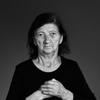

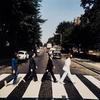


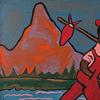


![Washington, George (1732-1799) Washington Receiving a Salute on the Field of Trenton. New York: Published by John McClure at Goupils, [c. 1863]. (Lot 5, Estimate $500-700) Washington, George (1732-1799) Washington Receiving a Salute on the Field of Trenton. New York: Published by John McClure at Goupils, [c. 1863]. (Lot 5, Estimate $500-700)](/images/c/69/d2/2950B_05_Washington_Salute_Trenton100x100_c.jpg)
